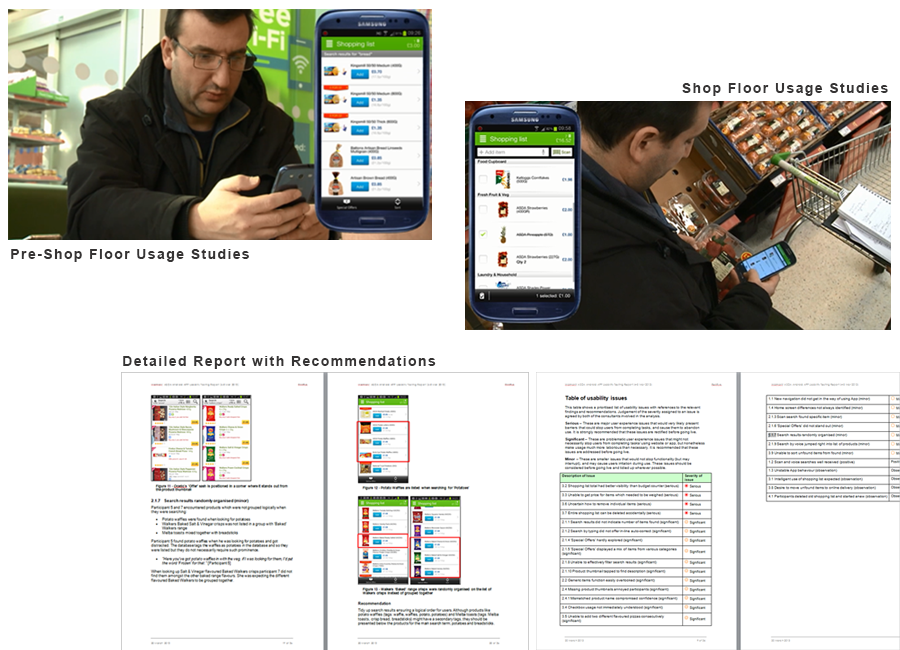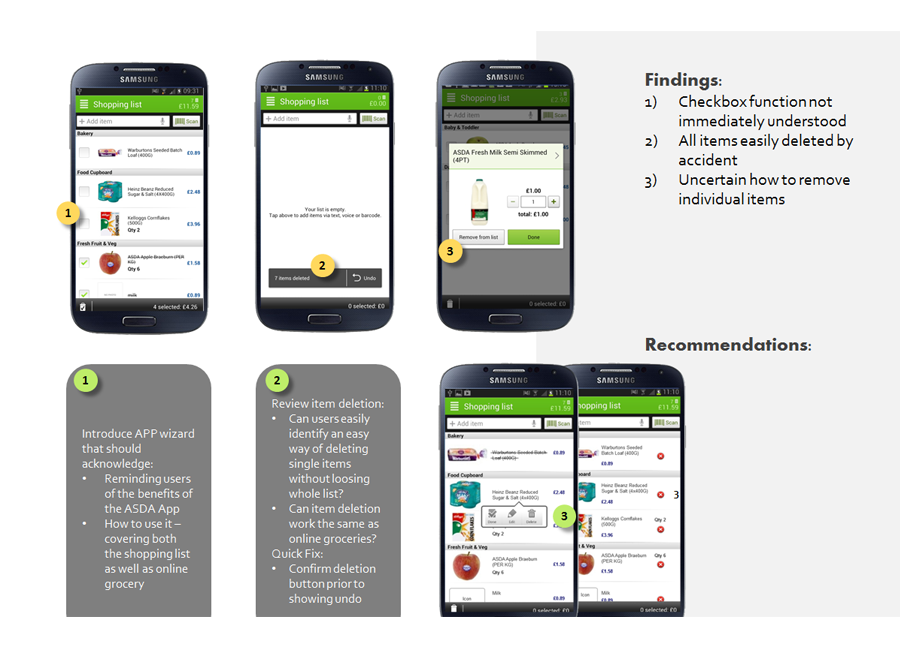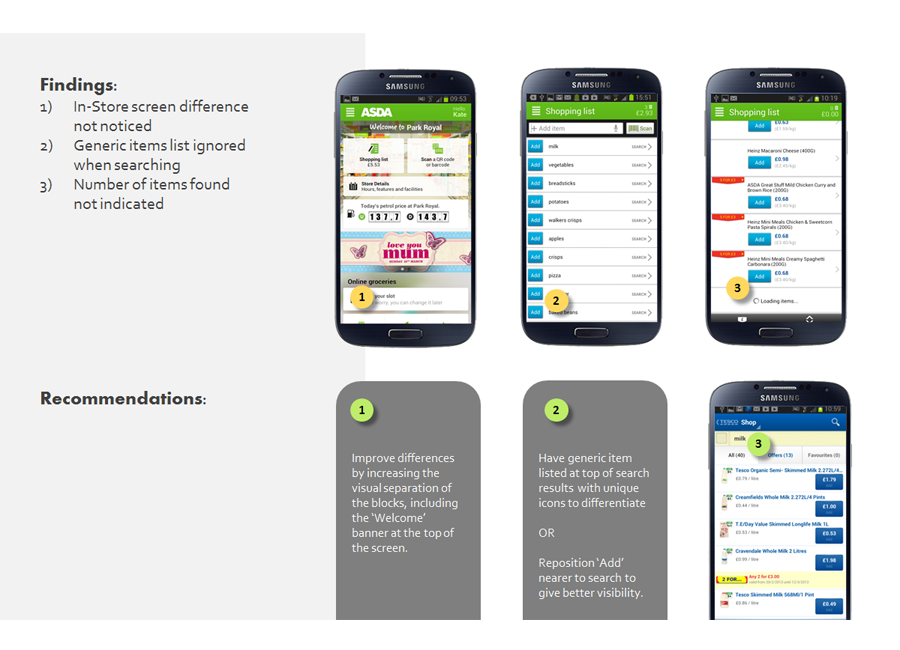Project goal/ Challenge:
ASDA/Walmart’s eCommerce activities were growing in the UK with their online and mobile channels, the client (US-based team) developed an additional shopping list feature on their Android shopping app to extend their multichannel capabilities. They wanted to validate the usability and check that customer needs were met.
RedEye project team recommended conducting contextual usability testing in-store, with 12 participants over 2 days. That allowed users to simulate a shopping journey on the shop floor using the new feature in the app.
Outcome/ Impact:
With the key findings from this piece of research, the client team reiterated the app. This contributed to an increase in their multichannel sales by 18.8% over the fourth quarter.
Approach:
- 2 day in-store contextual research
- Prototype app supplied by client
- Locally sourced Android phones
- In-store dry run sessions prior to 2 day research
- 1.5hour 2 part testing: pre-shop floor list making; shopping experience
Team:
- Lead moderator
- Assistant moderator
- Cameraman
- IT support
- Project Coordinator
- UK based client coordinator
- US based clients’ app development team
- US based client leads
My role:
Co-moderator, Participant recruitment liaison, Project coordination
Participant recruitment
Having agreed to the recruitment participant profiles with the client, I liaised with the 3rd party recruitment agents to agree on participant profiles and screener. These were signed off by the client before recruitment took place.
Client/ Location coordination
I coordinated with the client’s UK-based contact to organise the ASDA/ Walmart branch we eventually tested in, and agreed with the store manager on the days and times testing were carried out. We also arranged a room for the project team (including the client) to meet and debrief after each session/ day. It was also where the IT support and camera person downloaded the video shots for analysis.
Usability testing script
The usability testing script was written with two parts to the test session. First simulated users inputting items they would like to get during their shop at the supermarket. The second simulated using the app on the shop floor as they carried out their shopping.

Key findings:
Although the new shopping list feature itself contained multiple useful functions, there was a general questioning amongst participants on the need of a shopping list with a built in total spend calculator.


Deliverables:
- Full report containing severity ratings table & recommendations
- Mockups of recommendations included in report
- Full set of video footages output from Morae recordings
Project learnings:
This one-off consultation gives us a good idea of potential business outcomes, but more data from various channels would provide a clearer picture. The business would have gained from a more agile approach to feature development, testing and iterating quickly before coding.
In retrospect, a fully customer-centric research approach would have been more effective. Combining contextual inquiry, usability testing, and surveys would have revealed key friction points in ASDA/Walmart’s digital and in-store experience. Observing shoppers in their natural environment, alongside structured usability tests, would have given us deeper insights into how easily they could complete tasks and navigate. This mixed-methods approach would have provided a richer understanding of user needs, leading to more targeted recommendations for boosting customer engagement across all touchpoints.